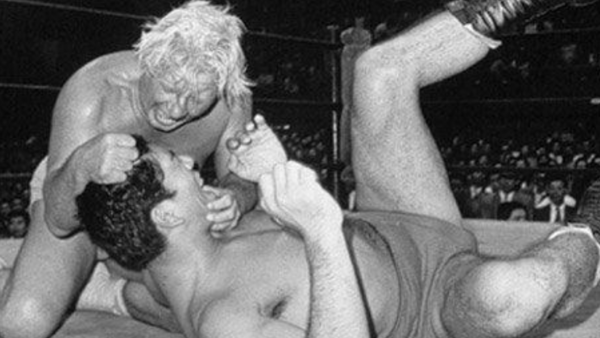Wrestling’s Best Ever…Heel

Blassie was the ‘Hollywood Fashion Plate’ and the ‘King of Men’. He was a catchphrase-generator; yet another influence held over wrestling forevermore. One such nickname was the ‘Vampire’; Blassie sharpened his teeth to better draw blood from his opponents. This creation was so effective that wrestling apocrypha has similarly filed it into legend; Blassie claims to have caused 92 heart attacks among the hyper-patriotic emerging puroresu crowd in the 1960s.
Enraged at Blassie’s despicable, unfair treatment of demigod and godfather Rikidōzan, their raw hearts, beating with geopolitical fury, wrenched by a psychological master, literally could not take it. “My ambition was to kill 100, and I failed,” Blassie later remarked.
Work or shoot, there’s no doubting the brilliant evil of that promo.
His charisma and star-power was such that he crossed over to other spheres of the entertainment industry (and, later, Bret Hart used Blassie's coined "pencil-necked geek" insult in the golden era of The Simpsons), but Blassie drew the highest praise from the higher power of pro wrestling. Real recognise real; chief heel among the wrestling fandom today, the out-of-time WWE Chairman Vince McMahon, considers Blassie the greatest of all time. Those on the outside, in his pomp, could not share that opinion. Several other wrestlers were sufficiently over enough to incite riots, back when wrestling was almost invariably presented as on-the-level, high-stakes competition in front of a more passionate, less jaded audience.
Few received quite as many stab wounds, which Blassie would show off with pride to the boys backstage. Fewer still, if any, were attacked with acid as Blassie was in LA— a place, just like Tokyo, New York, Georgia, Hawaii, the southeastern United States, in which he was loathed.
California was where Blassie’s legend was secured; Los Angeles Times writer Jim Murray once referred to him as “the worst villain since Hitler”. Setting record TV ratings in Japan, and record box office with John Tolos in both southern California and, in the case of their 1971 bout in the Coliseum, the largest money gate in U.S. history. The fans didn’t love to hate Blassie—he would earn that affectionate distinction as a manager and ambassador in the WWWF—but they wanted him beaten so badly they paid for it in record droves.
Much like he left an imprint on the arms and foreheads of his babyface opponents, Blassie left a mark on the business forevermore.